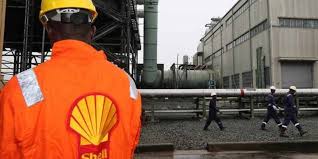Oil & Energy
New Energy Reality, A Massive Opportunity For Investors

Since the very beginning of the novel coronavirus pandemic, it was clear that coronavirus would have a severe and lasting impact on the energy industry. At first, as the worldwide economy ground to a sudden halt, energy demand plummeted, causing oil markets to go haywire. OPEC+ almost immediately turned on each other causing a price war and global oil glut, and in North America oil prices did the previously unthinkable, with the West Texas Intermediate crude benchmark bottoming out way below zero, closing the day at nearly $40 in the hole. In the same month, energy consumption in the United States hit a stunning 16-year low.
Now, although oil markets have recovered in comparison to what some are calling Black April, the outlook is still bleak for fossil fuels. Energy consumption actually continued to get a lot worse, hitting a whopping 30-year low before leveling off. Demand has not fully recovered to pre-pandemic levels, and energy consumption will remain impacted for a long time to come. As the months have passed, the complexity of what the pandemic has done to our energy consumption patterns has become more clear.
Some of these effects are no-brainers. Commercial and industrial energy consumption is down (consumption in the commercial sector dropped by 11 percent and the industrial sector dropped by 9 percent year over year). Household energy consumption is up (8 percent nationally and an incredible 21 percent in Arizona and Michigan). But the big picture is a lot more complicated, and a lot more interesting.
A new study from Diana Sabau at CommercialCafe compares the second quarter of 2019 to the second quarter of 2020 and analyses the contrast from a number of different angles. The study looks at the breakdown state-by-state, and the impact of COVID-19 on energy consumption is surprisingly diverse in different parts of the country. The state with the biggest drop in commercial energy consumption was Hawaii, which clocked a loss of 22 percent thanks in large part to the shutdown of the tourist sector and the islands’ energy-guzzling hotels and restaurants along with other hospitality-related businesses. Hawaii was followed by Pennsylvania and Washington, D.C., which saw commercial energy consumption drop by 21% and 20%, respectively.
One of the interesting takeaways from this analysis is that the industrial sector’s plummeting energy usage would have been remarkably lower were it not for hospitals, which were running on overdrive and have the energy footprint to prove it. “Because treatments typically heavily rely upon electrical devices — such as heart and vital signs monitors; IV machines; sequential compression devices; ventilators and so on — energy consumption here has increased sixfold,” Com-mercialCafe reports.
The energy mix has also notably changed year over year, with renewables overtaking coal for the first time, and not by a small margin. Renewables beat out the notoriously dirty fossil fuel by 7 percent in the second quarter. Natural gas, however, remained supreme, accounting for about 40 percent of the total energy mix in the first half of this year.
This sudden and extreme change in the way that energy is consumed in the United States has led to great innovation. “With so much unused or underused space on the market, owners and investors are seeing renewed potential in adaptive reuses of these buildings,” For-bes reported this week. “For instance, thousands of square feet of office space in Boston, San Diego, Houston and New York are currently being converted into lab space as demand for this type of space has been growing since the onset of the pandemic.”
Other experts believe that this unprecedented interruption to the energy industry’s status quo is an invaluable opportunity to redirect the trajectory of energy around the world in order to better our means of production and consumption on the eve of catastrophic climate chan-ge. The bigwigs over at the World Economic Forum have advocated for the use of this cataclysmic shift in momentum to design and implement a “new energy order” and a “great reset.” With countries around the world planning green stimulus packages for post-pandemic economic recovery, it’s looking hopeful that one of the silver linings of this tragic pandemic will be a more intentional, efficient, and responsible energy landscape.
Zaremba writes for Oilprice.com
Haley Zaremba
Oil & Energy
Nigeria Loses More Crude Oil Than Some OPEC Members – Nwoko

Nigeria’s losses due to crude oil theft has been said to be more significant than those of some other members of the Organisation of Petroleum Exporting Countries(OPEC).
The Chairman, Senate Ad- hoc Committee on Crude Oil Theft, Senator Ned Nwoko, made this known in an interview with newsmen in Abuja.
Nwoko noted with dismay the detrimental impact of the issue, which, he said include economic damage, environmental destruction, and its impact on host communities.
According to him, the theft was not only weakening the Naira, but also depriving the nation of vital revenue needed for infrastructure, healthcare, education and social development.
The Senator representing Delta North Senatorial District described the scale of the theft as staggering, with reports indicating losses of over 200,000 barrels per day.
Nwoko disclosed that the ad hoc committee on Crude Oil Theft, which he chairs, recently had a two-day public hearing on the rampant theft of crude oil through illegal bunkering, pipeline vandalism, and the systemic gaps in the regulation and surveillance of the nation’s petroleum resources.
According to him, the public hearing was a pivotal step in addressing one of the most pressing challenges facing the nation.
‘’Nigeria loses billions of dollars annually to crude oil theft. This is severely undermining our economy, weakening the Naira and depriving the nation of vital revenue needed for infrastructure, healthcare, education, and social development.
‘’The scale of this theft is staggering, with reports indicating losses of over 200,000 barrels per day more than some OPEC member nations produce.
‘’This criminal enterprise fuels corruption, funds illegal activities and devastates our environment through spills and pollution.
‘’The public hearing was not just another talk shop; it was a decisive platform to uncover the root causes of crude oil theft, bunkering and pipeline vandalism.
‘’It was a platform to evaluate the effectiveness of existing surveillance, monitoring, and enforcement mechanisms; Identify regulatory and legislative gaps that enable these crimes to thrive.
‘’It was also to engage stakeholders, security agencies, host communities, oil companies, regulators, and experts to proffer actionable solutions; and strengthen legal frameworks to ensure stricter penalties and more efficient prosecution of offenders”, he said.
Nwoko noted that Nigeria’s survival depended
Oil & Energy
Tap Into Offshore Oil, Gas Opportunities, SNEPCO Urges Companies

Shell Nigeria Exploration and Production Company Ltd. (SNEPCo) has called on Nigerian companies to position themselves strategically to take full advantage of the growing opportunities in upcoming offshore and shallow water oil and gas projects.
The Managing Director, SNEPCO, Ronald Adams, made the call at the 5th Nigerian Oil and Gas Opportunity Fair (NOGOF) Conference, held in Yenagoa, Bayelsa State, last Thursday.
Adams highlighted the major projects, including Bonga Southwest Aparo, Bonga North, and the Bonga Main Life Extension, as key areas where Nigerian businesses can grow their capacity and increase their involvement.
“Shell Nigeria Exploration and Production Company Ltd. (SNEPCo) says Nigerian companies have a lot to benefit if they are prepared to take advantage of more opportunities in its offshore and shallow water oil and gas projects.
“Projects such as Bonga Southwest Aparo, Bonga North and Bonga Main Life Extension could grow Nigerian businesses and improve their expertise if they applied themselves seriously to executing higher value contracts”, Adams stated.
Adams noted that SNEPCo pioneered Nigeria’s deepwater oil exploration with the Bonga development and has since played a key role in growing local industry capacity.
He emphasized that Nigerian businesses could expand in key areas like logistics, drilling, and the construction of vital equipment such as subsea systems, mooring units, and gas processing facilities.
The SNEPCO boss explained that since production began at the Bonga field in 2005, SNEPCo has worked closely with Nigerian contractors to build systems and develop a skilled workforce capable of delivering projects safely, on time, and within budget both in Nigeria and across West Africa.
According to him, this long-term support has enabled local firms to take on key roles in managing the Bonga Floating, Production, Storage and Offloading (FPSO) vessel, which reached a major milestone by producing its one-billion barrel of oil on February 3, 2023.
Oil & Energy
Administrator Assures Community Of Improved Power Supply

The Emohua Local Government Area Administrator, Franklin Ajinwo, has pledged to improve electricity distribution in Oduoha Ogbakiri and its environs.
Ajinwo made the pledge recently while playing host in a courtesy visit to the Oduoha Ogbakiri Wezina Council of Chiefs, in his office in Rumuakunde.
He stated that arrangements are underway to enhance available power, reduce frequent outages, and promote steady electricity supply.
The move, he said, was aimed at boosting small and medium-scale businesses in the area.
“The essence of power is not just to have light at night. It’s for those who can use it to enhance their businesses”, he said.
The Administrator, who commended the peaceful nature of Ogbakiri people, urged the Chiefs to continue in promoting peace and stability, saying “meaningful development can only thrive in a peaceful environment”.
He also charged the Chiefs to protect existing infrastructure while promising to address the challenges faced by the community.
Earlier, the Oduoha Ogbakiri Wezina Council of Chiefs, led by HRH Eze Goodluck Mekwa Eleni Ekenta XV, expressed gratitude to the Administrator over his appointment and pledged their support to his administration.
The chiefs highlighted challenges facing the community to include incessant power outage, need for new transformers, and the completion of Community Secondary School, Oduoha.
The visit underscored the community’s expectations from the LGA administration.
With Ajinwo’s assurance of enhancing electricity distribution and promoting development, the people of Oduoha Ogbakiri said they look forward to a brighter future.
By: King Onunwor
-
Sports5 days ago
Eagles B Players Admit Pressure For CHAN Qualification
-
Rivers4 days ago
Rivers Judiciary Denies Issuing Court Order Stopping SOLAD from Swearing in RSCSC Members
-
Rivers5 days ago
Group Seeks Prosecution Of Clergy, Others Over Attempted Murder
-

 Niger Delta4 days ago
Niger Delta4 days agoOborevwori Boosts Digitalisation With Ulesson 500 Tablets To Pupils, Students
-
Business4 days ago
CRG Partner JR Farms To Plant 30m Coffee Seedlings
-
Foods/Drinks5 days ago
What To Know About Your Menu
-

 Niger Delta4 days ago
Niger Delta4 days agoDon Highlights On The Potential Of Groundwater As Hidden Wealth For Sustainable Future
-
Rivers5 days ago
Four Internet Fraudstars Get Different Jail Terms In PH

